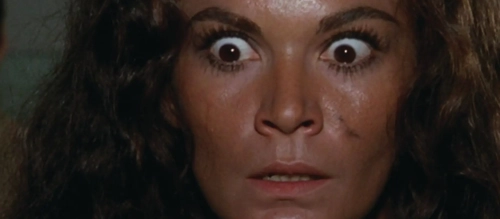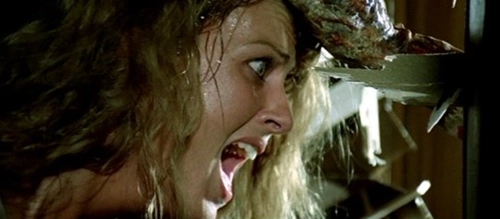Where to Start with Lucio Fulci
Lucio Fulci’s extensive career has seen him create some of the most iconic horror films to have graced the genre, with his artistic flair and innate ability to amalgamate tension with stunning visuals fashioning incredible cinema.
Fulci’s talents originate from his early days as an art critic, writing for the likes of Gazzetta delle Arti, interacting with the creative industries and forming a valuable reputation in the field. Fulci would then enrol in film school, working on documentaries before acclaimed filmmaker Stefano Vanzina, known as Steno, noticed Fulci’s spark and hired him as an assistant director on multiple Italian comedies. As he grew within the Italian film market, Fulci made a giant leap from lighthearted comedies to hard-hitting giallo horrors with Una sull’altra (1969), followed by A Lizard in a Woman’s Skin (1971), the latter of which saw Fulci arrested with animal cruelty charges due to the simulated violence being so graphic.
The filmmaker’s path to giallo was forged, creating a lifelong dedication to the hyper-stylised slasher subgenre of Italian horror, with the likes of Don’t Torture a Duckling (1972), Zombi 2 (1979), The Black Cat (1981), The Beyond (1981), The House by the Cemetary (1981), The New York Ripper (1982), and Murder Rock (1984) lining the peripherals of his auteurship with dark visions of extravagant violence and expressive narratives.
The great Lucio Fulci was a filmmaking force, achieving immense cinematic success through his numerous films, many of which are definitive classics. Upon breaking down Fulci’s dense filmography, here is The Film Magazine’s guide on Where to Start With Lucio Fulci.
1. Don’t Torture a Duckling (1972)

Lucio Fulci’s breakout hit, Don’t Torture a Duckling, internalises every aspect of the filmmaker’s signature style to produce a flourishing display of repression, culpability and immoralities.
Giallo films are often plastered with compliments regarding the lavish mise-en-scène and elaborate cinematography, and whilst classic giallo’s such as Don’t Torture a Duckling exercise these essential qualities, Fulci also implements an immensely dynamic storyline that propels the narrative to be on the same terrain as the immense visual practicalities. The whodunit aspect is layered with connotations regarding the extremities of religion, particularly with the film’s antagonist being revealed as a man of God, one of whom feels he has the power to kill in order to prevent eventual sins.
The critique on moral avengers hiding in plain sight alongside complex and extensive plots is an essential detail throughout Fulci’s work. Originating from within the confines of Don’t Torture a Duckling is Fulci’s inclusion of fantasy amidst a bleak and serious backdrop, equating reality with surrealism and forming a trippy experience akin to an utterly eerie nightmare.
2. Zombi 2 (1979)

Despite the name, Zombi 2 is, in fact, a sequel to George A. Romero’s Dawn of the Dead (1978), which was released under the title Zombi in Italy. The history of Dawn of the Dead in Italy is somewhat unorthodox, with the film being re-edited by Dario Argento, replacing Romero as the original editor, and the prog-rock band Goblin re-scoring the film. To continue the success of the rejuvenated Zombi, Fulci was brought in to direct its sequel, which resulted in a horror that is a visual feast for the eyes.
Zombi 2 features a plethora of signature Fulci features, with the film’s heavy gore and gnarly violence becoming a staple part of his post-Zombi career. One particularly infamous scene shows a woman hiding from the undead creature, slamming a door behind her and slicing off the Zombie’s trapped decaying fingers. The orchestral score heightens, and the Zombie smashes his arm through the door frame, grabbing her head and forcing her eye into a sharp splinter from the panel, causing streams of gushing blood and fluid to erupt and fill the frame with images of one of the most unnerving instances of pain one could conjure.
The torturous scene is painfully slow, leaving us shivering in anticipation and quivering in dread over the eventual eye-gouging that is entirely unavoidable. The gory close-up is classic Fulci, with nearly every one of his horrors following Zombi 2 enacting extreme violence in an unbearably confrontational manner.
3. City of the Living Dead (1980)

The success of Zombi 2 saw Fulci become a highly sought-after director, with every studio desperate to get their hands on his artistic flair. Joining Fulci in the writers’ room for his next undead-focused feature was Dardano Sacchetti, a fellow member of the Giallo Hall of Fame. The pair took inspiration from H.P. Lovecraft’s works. They adapted a script brimming with visceral antics, repulsive kills, and an off-kilter charm that combines typical zombie frights with a surreal Lovecraftian sensibility.
Unlike the instant successes of Don’t Torture a Duckling and Zombi 2, City of the Living Dead was met with a contentious reaction from critics and audiences alike. Many reviews bashed the supposed nonsensicality of the plot, with Fulci placing shock and terror at the forefront, forgoing his usual brooding mystery-based stories. Whilst City of the Living Dead does take creative liberties, the beauty and allure of the film occur at the hands of the absurd plot twists and out-of-context violence. The world within City of the Living Dead is frighteningly bizarre and bathed in the uncanny, inflicting a constant sense of alarm and uncertainty.
Recommended for you: Where to Start with Michael Haneke
When discussing the hefty subject of horror cinema, it would be criminal not to give a nod of appreciation to the one and only Lucio Fulci, with many of his films not only contributing to the genre but also acting as staples that have gone on to define classic horror. Unabashed gore and astonishingly monstrous deeds define what Fulci’s filmography is all about. This auteur was one who was all for performative stories that take us on chaotic journeys of slaughter and savageness, and, despite the dissonance, he always guaranteed a thoroughly entertaining time.

